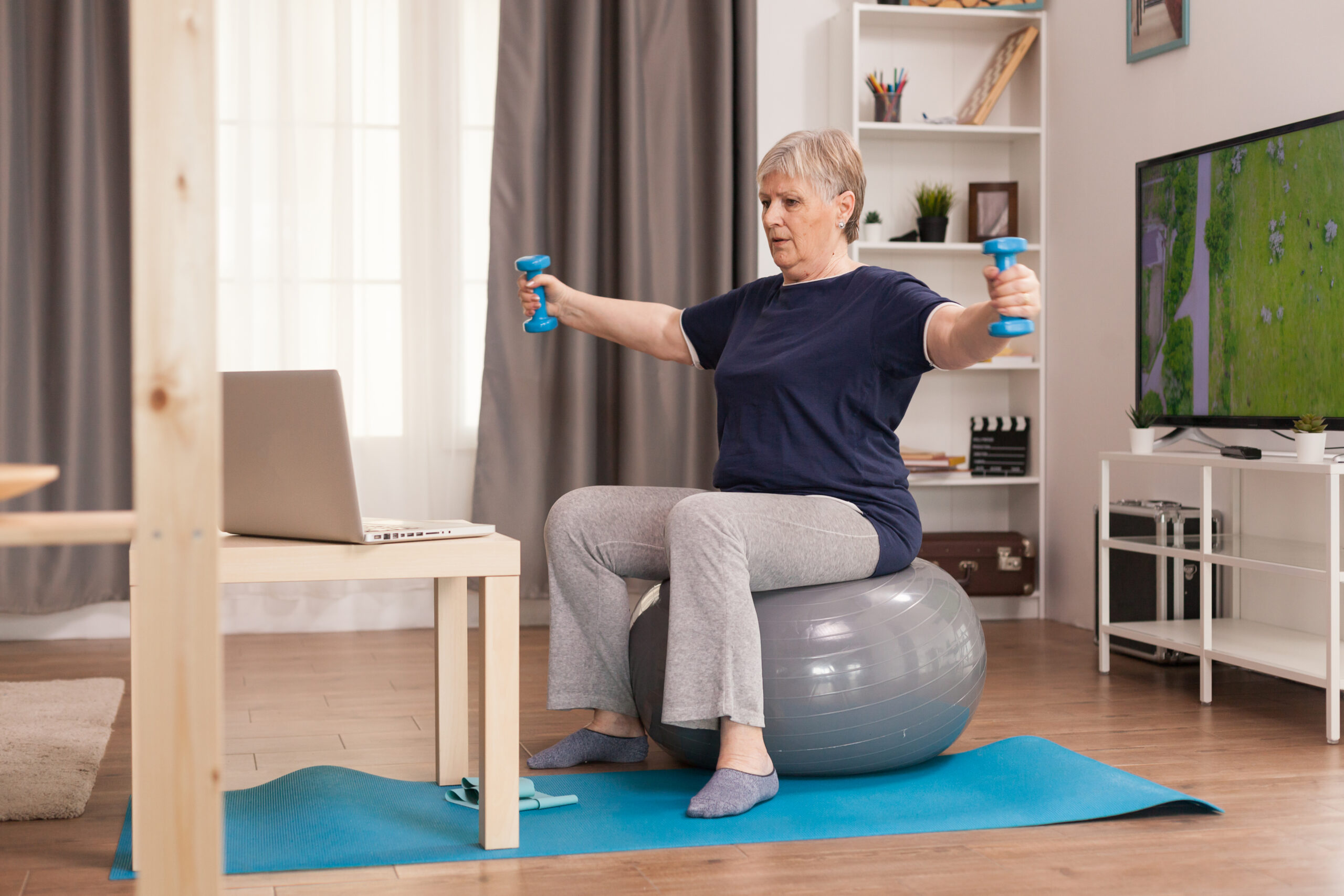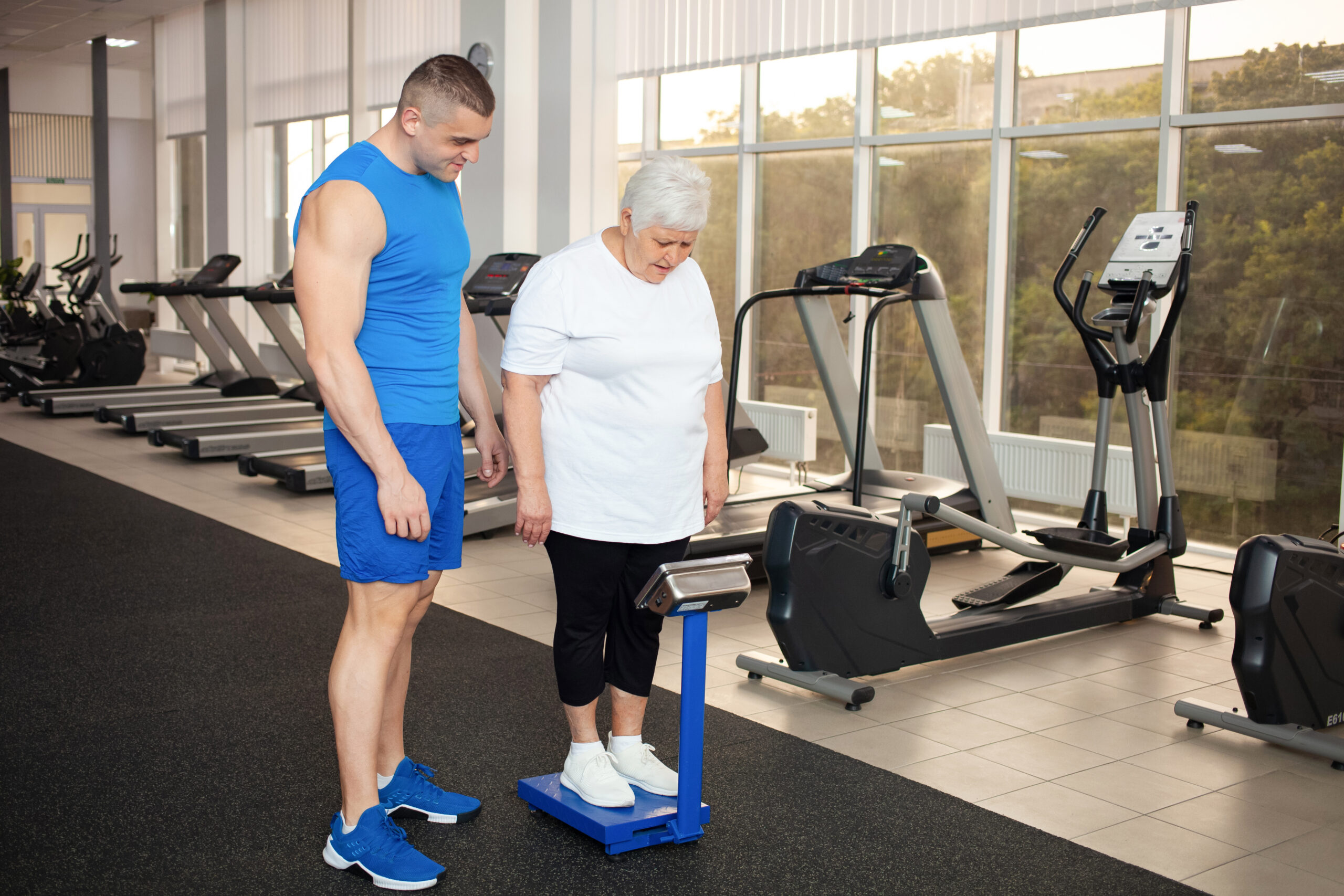Strength training is a powerful tool for weight loss for individuals of all ages, including older adults. By engaging in regular resistance exercises, you can help maintain and build muscle mass, which is crucial since muscle mass naturally declines as you age. Additionally, muscle tissue burns more calories than fat tissue does, so increasing muscle mass can help speed up your metabolism, making it easier to maintain or lose weight.
For older adults, the benefits of strength training go beyond weight loss. Incorporating weight-bearing exercises into your routine can improve balance, reduce the risk of falls, and strengthen bones, reducing the likelihood of osteoporosis. Moreover, strength training can enhance mobility, overall function, and help manage chronic conditions such as arthritis or diabetes. Therefore, even though starting a new exercise regimen might seem daunting, the advantages it offers are substantial and impactful for long-term health and well-being.
Key Takeaways
- Strength training increases muscle mass, aiding in weight management and metabolism.
- Regular resistance exercise promotes better balance, stronger bones, and reduced fall risk.
- Starting a strength training program can improve overall health and function in older adults.
Benefits of Strength Training for Older Adults
Strength training is an excellent way for you to maintain and enhance your physical health as you age. Engaging in regular resistance exercises can lead to multiple health benefits that may contribute to a more independent and vibrant life.
-
- Maintaining Muscle Mass: As you age, muscle mass naturally decreases. Strength training can combat this decline, helping you preserve and even build muscle tissue.
- Improving Mobility: With stronger muscles, your mobility can also improve, making everyday activities easier.
- Boosting Metabolic Rate: Strength training can increase your resting metabolic rate, aiding in weight management.
- Enhancing Bone Density: Resistance exercises can increase bone density and reduce the risk of fractures.

A study from the National Institute on Aging (NIA) reported that more than 40 years of research found strength training to have a significant impact on the health of older adults, including prolonging the number of healthy years in life. Additionally, according to a Harvard Health article, strength training can help manage and sometimes prevent various conditions such as heart disease, diabetes, and osteoporosis.
Incorporating strength training into your exercise routine doesn’t require a significant time commitment or equipment. Programs can range from highly controlled laboratory-based to minimally supervised home-based routines and still elicit meaningful health benefits.
By prioritizing strength training, you can support both your mental and emotional health, providing a foundation for better quality of life as you age.
Understanding Weight Loss in Older Adults

When approaching weight loss in older adulthood, it’s critical to understand the unique physiological changes that occur with age and how they impact your body’s ability to shed pounds.
Metabolic Changes
As you age, your metabolic rate—the number of calories your body uses to maintain vital functions—tends to slow down. This decrease means that even if you continue eating the same amount as when you were younger, you might experience weight gain. Muscle mass naturally diminishes with age, and since muscle tissue burns more calories than fat tissue does, this also contributes to a slower metabolism.
Nutritional Considerations
The quality of the food you consume becomes even more important as you get older. Ensuring that your diet includes sufficient protein can help counteract muscle loss. Protein-rich foods support muscle repair and growth, which is essential for maintaining a healthy metabolism. Additionally, it’s necessary to balance your intake of carbohydrates, fats, and fiber—focusing on nutrient-dense options like fruits, vegetables, whole grains, and lean proteins—to support overall health and weight management.
Designing a Strength Training Program
Crafting an effective strength training program for weight loss in older adults involves careful consideration of individual needs, exercise selection, and a sustainable approach to progression.
Assessment and Personalization
Before diving into strength training, assess your current fitness level, health conditions, and goals. This personalization ensures the program is tailored to your capabilities and limitations, enhancing both safety and effectiveness. You may consider a fitness assessment administered by a professional to establish a baseline and track progress.
Exercise Selection
Select exercises that engage multiple muscle groups and offer a full range of motion. For example, squats and bench presses are foundational movements that target several muscles simultaneously. The program provided in Strength Training for The Older Client includes a variety of exercises to ensure a balanced workout.
Progression and Adaptation
As you adapt to your strength training routine, gradually increase the intensity to continue challenging your muscles. This could involve adding more weight, increasing reps, or incorporating more complex movements. Ensure these adjustments are incremental to minimize injury risk and promote sustained progress.
Safety Considerations in Strength Training

When you engage in strength training, prioritizing safety helps prevent injuries and complications. It’s essential to understand the right techniques and approaches, especially if you are managing pre-existing health conditions.
Injury Prevention
To protect yourself from injuries while strength training:
- Start Slowly: Begin with lighter weights and gradually increase intensity.
- Use Proper Form: Keep your movements controlled and avoid jerky motions.
- Support Your Joints: Use weightlifting gloves and wraps as needed for additional support.
Managing Health Conditions
If you have health conditions, consider these precautions:
-
- Consult Your Doctor: Get clearance before starting any new exercise program.
- Monitor Your Heart Rate: Keep an eye on your exertion levels, particularly if you have cardiovascular concerns.
- Adapt Exercises: Modify movements to accommodate any physical limitations you might have.
Practical Tips for Getting Started
When embarking on a strength training program for weight loss, it’s vital that you approach your routine with patience and consistency. Here are some actionable tips to help you get started:
- Consult with a Professional: Before you start lifting weights, speak to your healthcare provider or a certified fitness trainer, especially if you have existing health concerns. They can tailor a program to your needs and abilities.
- Start Slowly: Begin with lighter weights and focus on proper form to avoid injuries. Gradually increase the weight as your strength improves.
- Focus on Compound Movements: Choose exercises that work multiple muscle groups at once, such as squats or presses. This will help you maximize your workout efficiency.
- Incorporate Bodyweight Exercises: Not all strength training requires equipment. Exercises like lunges and push-ups are effective and can be performed anywhere.
- Be Consistent: Aim for at least two sessions per week. Consistency is key for building strength and losing weight.
- Pay Attention to Your Diet: A healthy diet is essential for weight loss. Ensure you’re eating a balanced diet to support your training and overall health.
- Track Your Progress: Write down your workouts and the weights you use. It will help you stay motivated and reveal your improvements over time.
- Stay Hydrated: Drink plenty of water before, during, and after your workouts to stay hydrated and support muscle recovery.
Remember, the journey to fitness is a marathon, not a sprint. Take your time, stay focused, and celebrate each step forward.
Monitoring Progress and Adjusting the Program

To effectively lose weight and build strength, it’s crucial to monitor your progress and make necessary adjustments to your workout regimen.
Tracking Techniques
To ensure you are on the right path, use specific tracking techniques. Record your workouts in a journal, noting the exercises, sets, repetitions, and any resistance used. Include measurements such as:
-
- Body weight: Weekly check-ins
- Body measurements: Monthly tracking of waist, hips, and other relevant areas
- Strength levels: Regular testing of one-repetition max (1RM) or the maximum weight you can lift for a single repetition
Digital tools can also be helpful. Apps that track workouts, body measurements, and offer detailed progress graphs provide at-a-glance insights into your gains.
Adaptations for Plateaus
When progress stalls, known as hitting a plateau, adjustments become necessary. Consider the following strategies:
- Manipulate your variables: Increase the weight, alter the number of sets or reps, or adjust rest intervals.
- Switch up exercises: Introduce new movements to challenge your muscles differently.
If weight loss plateaus, reevaluate your diet and ensure a caloric deficit is maintained. Consult healthcare professionals or fitness specialists to tailor your program safely and effectively.
Behavioral Strategies for Long-Term Success
When embarking on strength training to aid weight loss, particularly as an older adult, it’s essential to merge physical efforts with behavioral strategies. These strategies can set the foundation for sustained success.
Set Realistic Goals: Begin by establishing achievable and measurable objectives. For example, aim for a certain number of strength training sessions per week rather than focusing on the scale.
Self-Monitoring: Keep track of your progress by maintaining a training journal. Record your workouts, reps, sets, and how you felt during each session. This self-awareness is a key differentiator in long-term success.
- Consistency Over Intensity: Prioritize regular exercise over occasional high-intensity workouts. It’s the habit that counts.
- Support Systems: Engage with communities or partners who also participate in strength training. Solidarity can be powerful.
- Perspective: Remember that resistance training not only helps with weight loss but also improves muscle strength, which is crucial for an aging body.
Coping Mechanisms: Develop strategies to deal with setbacks. Whether it’s a missed workout or a plateau, plan for these events, and have coping mechanisms ready, such as a brisk walk or a session of stretching.
Mindful Eating: Combine your strength training with healthy dietary habits. Understand the importance of nutrition and build a habit of mindful eating to support your workout plan.
By incorporating these behavioral strategies, you equip yourself with the tools necessary not just for temporary weight loss, but for a sustained, healthy lifestyle with strength training as a cornerstone.
Balance and Flexibility Training
When embarking on strength training to aid weight loss, particularly as an older adult, it’s essential to merge physical efforts with behavioral strategies. These strategies can set the foundation for sustained success.
Set Realistic Goals: Begin by establishing achievable and measurable objectives. For example, aim for a certain number of strength training sessions per week rather than focusing on the scale.
Self-Monitoring: Keep track of your progress by maintaining a training journal. Record your workouts, reps, sets, and how you felt during each session. This self-awareness is a key differentiator in long-term success.
- Consistency Over Intensity: Prioritize regular exercise over occasional high-intensity workouts. It’s the habit that counts.
- Support Systems: Engage with communities or partners who also participate in strength training. Solidarity can be powerful.
- Perspective: Remember that resistance training not only helps with weight loss but also improves muscle strength, which is crucial for an aging body.
Coping Mechanisms: Develop strategies to deal with setbacks. Whether it’s a missed workout or a plateau, plan for these events, and have coping mechanisms ready, such as a brisk walk or a session of stretching.
Mindful Eating: Combine your strength training with healthy dietary habits. Understand the importance of nutrition and build a habit of mindful eating to support your workout plan.
By incorporating these behavioral strategies, you equip yourself with the tools necessary not just for temporary weight loss, but for a sustained, healthy lifestyle with strength training as a cornerstone.
Resistance Training with Equipment
When looking to build strength, resistance training with equipment can offer you targeted and adjustable options to enhance your workout routine effectively.
Free Weights
Free weights, such as dumbbells and barbells, are classic tools for resistance training that you can use to perform tension levels, makingpull-parts for your shoulders and chest exervariouscises targeting all major muscle groups. For your upper body, exercises like bicep curls and tricep extensions are beneficial, while squats and deadlifts can effectively work your lower body.
Resistance Bands
Resistance bands are versatile, portable pieces of equipment that can add resistance to your workouts and help improve your strength and flexibility. They come in different levels of tension, which makes them suitable for a gradual progression in your training. Examples of exercises include band pull-aparts for your shoulders and chest, and leg press movements while seated.
Machines and Other Equipment
Gym machines, such as the leg press, chest press, and lat pull-down, are specifically designed to target individual muscle groups with controlled movements, which can be safer for joints.making joints safercritical Other equipment includes cable systems that offer a wide range of motion and exercise options. On these machines, you can perform exercises like cable rows to strengthen your back and core stability exercises like cable twists.
Selecting appropriate equipment and exercises according to your fitness level is key to an effective resistance training program.
Bodyweight Exercises for Older Adults
As you age, maintaining strength and functionality is crucial for independence. Bodyweight exercises are ideal for older adults because they can be done anywhere, require no equipment, and can be modified to suit your fitness level. Here’s a simple guide to a few practicalifting your chest bodyweight exercises:
- Squats: Stand with feet hip-width apart, and perform a basic squat to strengthen your thighs, hips, and buttocks. Focus on keeping your chest lifted and sending your hips back as if sitting in a chair.
- Wall Push-Ups: Face a wall, place your hands on it at shoulder height, and perform push-ups. This variation is gentler on the joints while stil, lift your top leg, and strengthening the chest, shoulders, and arms.
- Leg Lifts: Lie on one sid switch sides. This exercise targets the outer thighs and hip abductors.
-
- Toe Stands: Rise onto the balls of your feet while standing or holding on to a chair for balance, to strengthen your calves and improve balance.
-
- Seated Knee Lifts: Sit in a sturdy chair, keep your back straight, and lift your knees one at a time to strengthen your hip flexors and thighs.
Remember to keep your movements slow and controlled. It’s essential to listen to your body and modify these exercises as needed. Begin with a small number of repetitions, and you can gradually increase the count as you get stronger.
| Exercise | Target Areas | Tips for Safety |
|---|---|---|
| Squats | Thighs, hips, buttocks | Keep knees behind toes; don’t let them cave inward. |
| Wall Push-Ups | Chest, shoulders, arms | Maintain a straight line from head to heels. |
| Leg Lifts | Outer thighs, hip abductors | Avoid jerky movements; keep it smooth. |
| Toe Stands | Calves, improves balance | Use a chair for support if needed. |
| Seated Knee Lifts | Hip flexors, thighs | Keep your back straight against the chair. |
By incorporating these exercises into your routine, you can help maintain your functional strength and mobility.
Community and Social Support in Fitness for Older Adults
Engaging in strength training can be more effective and enjoyable when you’re surrounded by a supportive community. Here’s how community and social support can play a crucial role in your fitness journey as an older adult:
- Accountability: Joining a group or program helps you stay committed. Knowing that others expect your participation can motivate you to attend regularly.
- Encouragement: Peers in a fitness group often encourage one another, creating a positive environment which can be particularly inspiring when challenges arise.
Group Fitness Benefits
Community-based exercise programs have the advantage of providing structured activities that are both safe and effective. For instance, resistance training for older adults is important for maintaining muscle mass and preventing frailty. A class setting can offer the guidance needed for completing these exercises correctly, minimizing the risk of injury.
Social Interaction in Exercise
Exercise can also serve as a social event. Social support, during group exercises contributes to overall well-being and can be a key component in leading a health-promoting lifestyle. Being part of a fitness community can combat feelings of isolation and encourage a shared experience in striving for health goals.
If you’re considering joining a community program, look for one that has:
- Professional leadership
- A record of positive outcomes
- A supportive and welcoming atmosphere
For more detailed information on the benefits of community-based programs, a comprehensive overview is available that covers the increase in physical activity facilitated by these types of programs.
Frequently Asked Questions
This section addresses common inquiries older adults have about incorporating strength training into their weight loss journey. It’s designed to empower you with safe, effective practices tailored to your age group.
What are safe strength exercises for those over 60 to aid in weight loss?
You can engage in a variety of strength training exercises such as squats, light free weights, resistance bands, or water workouts to build muscle and burn fat. These low-impact options are effective and minimize risk of injury.
What are the recommended guidelines for strength and power training frequency in adults over 70?
For individuals over 70, it’s typically recommended to perform strength training exercises at least twice a week. This should focus on all the major muscle groups, with guidance on the appropriate intensity and volume for health and safety.
How can strength training be effectively performed at home for seniors?
Seniors can effectively perform strength training at home using bodyweight exercises like wall push-ups, seated leg lifts, or using household items as improvised weights. Consistency and proper form are key for best results and safety.
What are some unexpected health benefits of weight training in older adults?
Weight training can improve bone density and cognitive function, decrease the risk of chronic diseases, and even contribute to better mood and sleep patterns, which are particularly beneficial as you age.
How can older females specifically benefit from weight training?
Older females can gain significant benefits from weight training, such as increased metabolism, improved bone density to counteract osteoporosis, and enhanced muscle mass for better overall physical stability and strength.
What types of strength training exercises are optimal for individuals looking to lose weight post-80 years of age?
At post-80 years of age, you should focus on gentle, controlled movements that emphasize balance and flexibility alongside strength, such as chair exercises, light dumbbell work, and resistance band activities that are low-impact and can be adjusted for individual ability and comfort.


